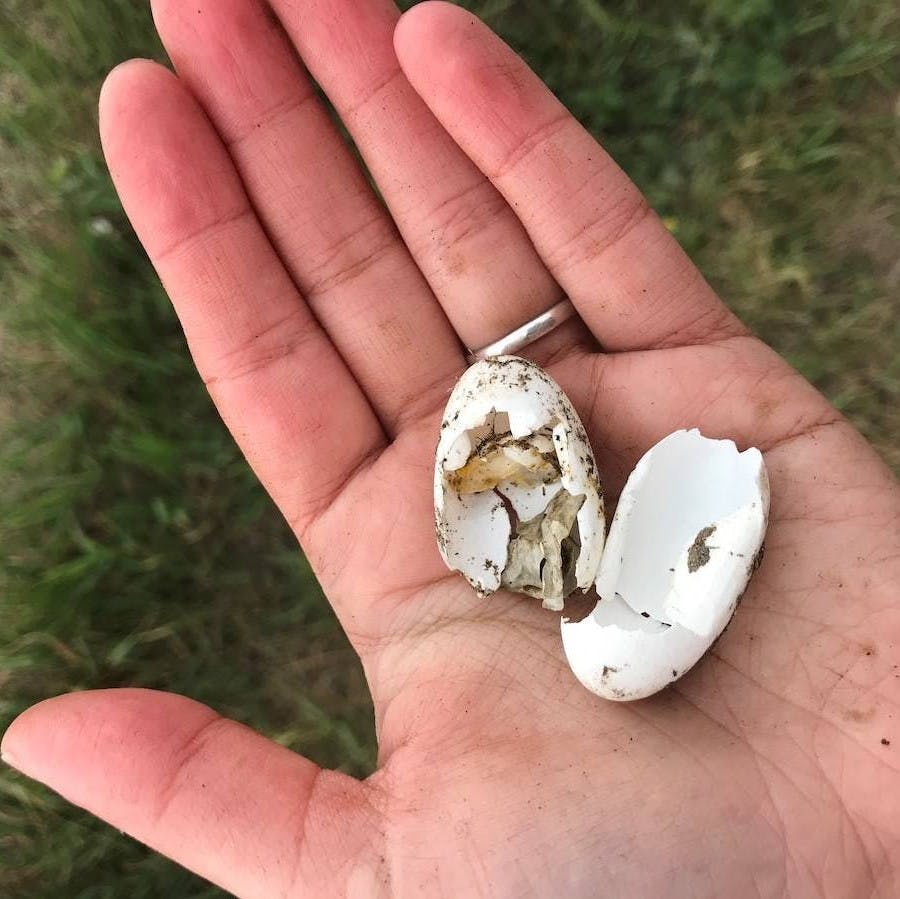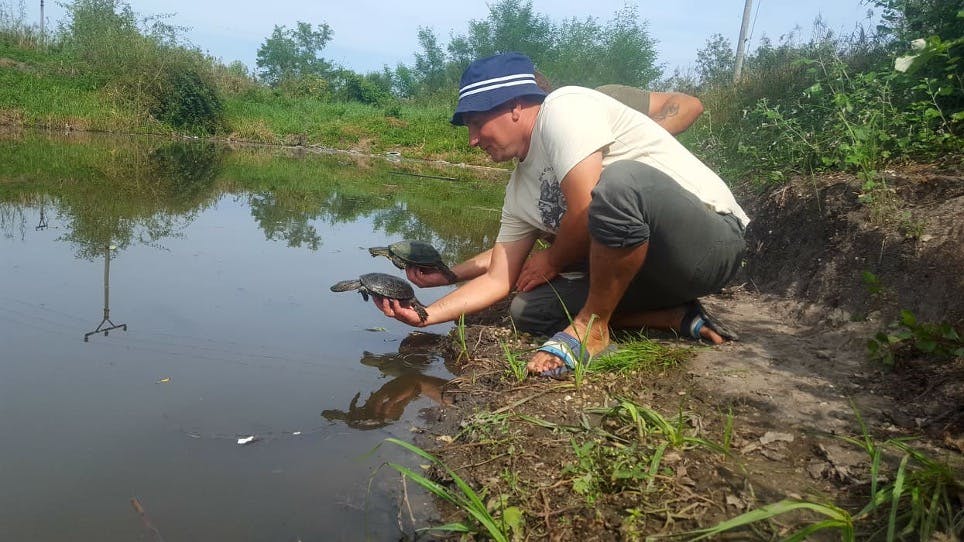- Budget spent: £2,454
- Status: Implemented
For the Spring 2020 rewilding project, we head to the location of our new project, Slovakia, where we support our amazing partners, Broz, to restore the Danube floodplain forests. This project assists the wonderful work happening to protect Slovakia's endangered population of European pond turtles.
Project Timeline
October 2020
Fences covering the turtle eggs & nests are removed.
August 2020
Adult pond turtles are tagged with GPS tags to gather important data on their movements and guide conservation decisions.
read moreLearn more about why we are protecting European pond turtle eggs & nests
Turtle conservation in Europe
Discussions of turtle conservation more often than not bring up images of charismatic sea turtles, like the logger head and green turtle, gliding through crystal clear warm waters and bathing on soft white tropical sand. Both these species are also found in Europe, specifically the Mediterranean Sea, and are the focus of ambitious conservation projects to protect against the large number of threats they face in Europe, both on land and at sea. These include harvesting for consumption, habitat degradation, disturbance and fishing-induced mortality. Lesser known but equally deserving of our attention are Europe’s freshwater turtles. Many freshwater species, which includes terrapins and pond turtles, are under threat from the pet trade, habitat degradation, habitat fragmentation, vehicle collisions and non-native predators, yet their conservation seems less of a priority. That’s why we’ve partnered with Broz, our partners in Slovakia, to protect one such species, the little European pond turtle, and help safeguard its future in Slovakia.

On The Brink
Fossil records show the European pond turtle (Emys orbicularis) has been present in Slovakia for at least 120,000 years. However, in recent years it has disappeared from much of its range. Today, there are only two known sites with a viable breeding population in Slovakia. These pond turtles live in open habitats and rely on wetlands, ponds and water channels for hunting and moving. Eggs are laid in shallow under ground nests in sandy soils with little vegetation. Depending on the weather, the hatchlings can remain at the nest site throughout winter and start emerging in spring following year. Unfortunately, the European pond turtle is losing suitable breeding habitat across much of its range as land is converted to agriculture and nests destroyed and turtles killed by agricultural disturbance.

Promoting Breeding
The nesting behaviour of these pond turtles leaves them susceptible to predators as well. Our partners have access to one of the last remaining breeding populations in Slovakia, where predation is the main threat. Predator protection measures are there a vital conservation intervention to protect this important population. The project funds the training of detection dog to detect turtle eggs underground. Since nests are practically invisible to the human eye, the detection dog will accompany the field team to the breeding site to survey for active nests. Fences are erected over active nests to protect the eggs and hatchlings from predators, thereby helping to improve the reproductive success of one of Slovakia’s last remaining breeding populations of European pond turtle.

GPS Tracking
To support the conservation of the turtles more widely, the team are tagging turtles with GPS trackers to enable them to monitoring their movement patterns in the long term. This will provide crucial data to enable the team to identify important areas of habitat for protection and restoration, including any unknown breeding sites.

the team behind the project

Hannah Kirkland, Conservation Biologist at Mossy Earth

Tomáš Kušík, European pond Turtle Project Manager and Chairman at Broz.
Sources & further reading

- “Critically endangered European pond turtle (Emys orbicularis) in western Slovakia: historical and current records with the discovery of a new reproducing population” - Herpetology Notes
- “The importance of aquatic and terrestrial habitat for the European pond turtle (Emys orbicularis): implications for conservation planning and management” - Canadian Journal of Zoology